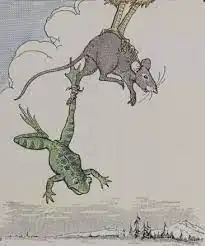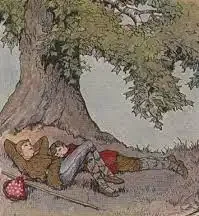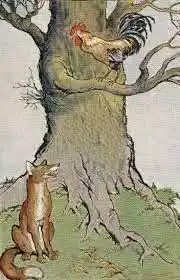The Frog and the Mouse
A young Mouse in search of adventure was running along the bank of a pond where a Frog was living. When the Frog saw the Mouse, he swam to the bank and croaked

“Won’t you visit me? I can promise you a good time if you do.”
The Mouse did not need much coaxing, for he was very anxious to see the world and everything in it.
But though he could swim a little, he did not dare risk going into the pond without some help.
The Frog had a plan. He tied the Mouse’s leg to his own with a tough reed. Then into the pond, he jumped, dragging his foolish companion with him.
The Mouse soon had enough of it and wanted to return to shore, but the treacherous Frog had other plans. He pulled the Mouse down under the water and drowned him.
But before he could untie the reed that bound him to the dead Mouse, a Hawk came sailing over the pond.
Seeing the body of the Mouse floating on the water, the Hawk swooped down, seized the Mouse, and carried it off, with the Frog dangling from its leg. Thus in one swoop, he had caught both meat and fish for his dinner.
Moral of the story
Deceit leads to trouble: Those who deceive others often end up facing consequences themselves.
Be cautious of false promises: Not everyone who promises a good time has good intentions.
Questions for the children
- Why do you think the Frog wanted to tie the Mouse to him?
- How could the Mouse have been more cautious in this situation?
Post Note: This story is based on Aesop’s fable, written around 600 BC. In this retelling, we’ve used simpler words to make the story easier for young readers to understand.





